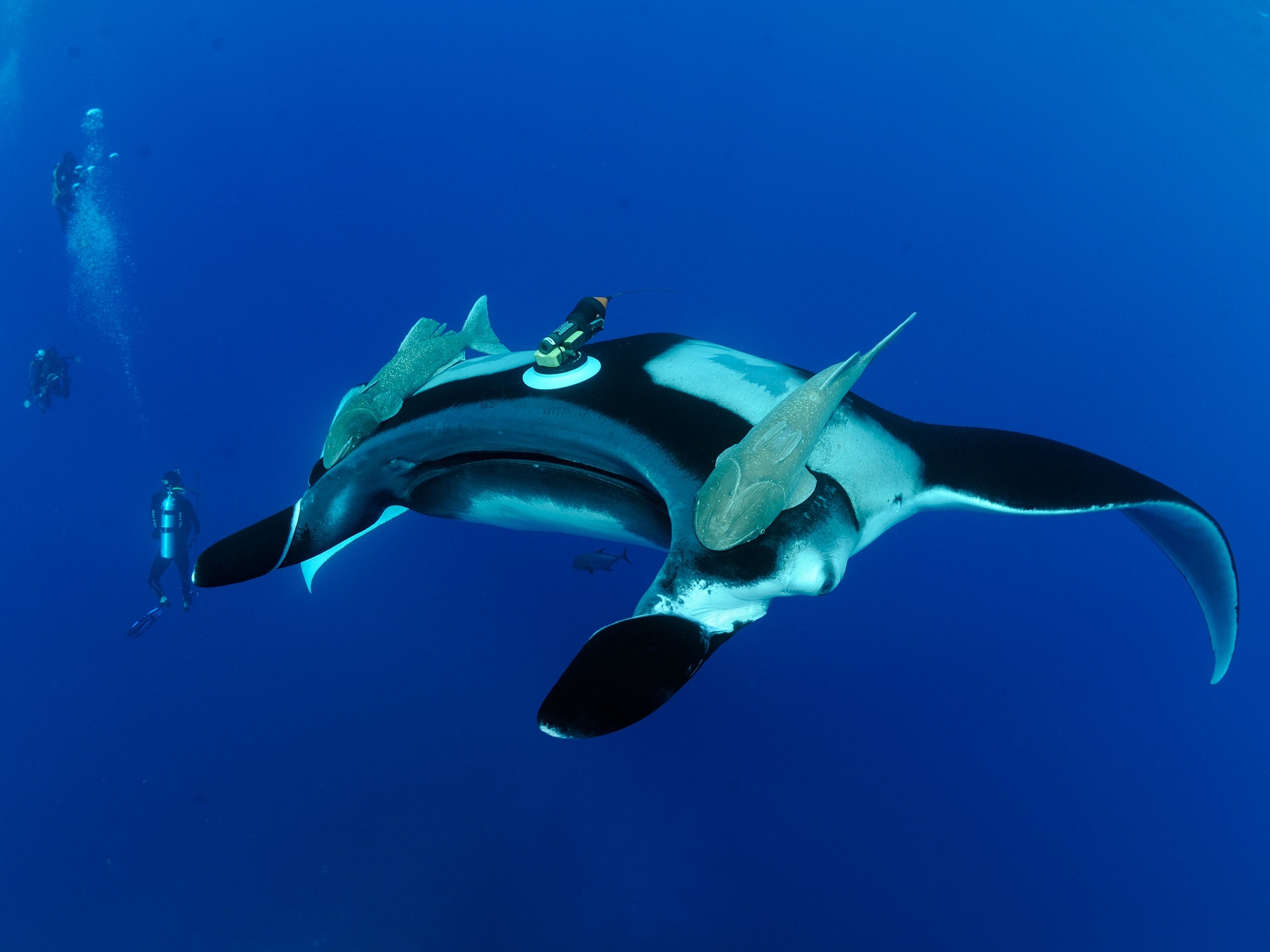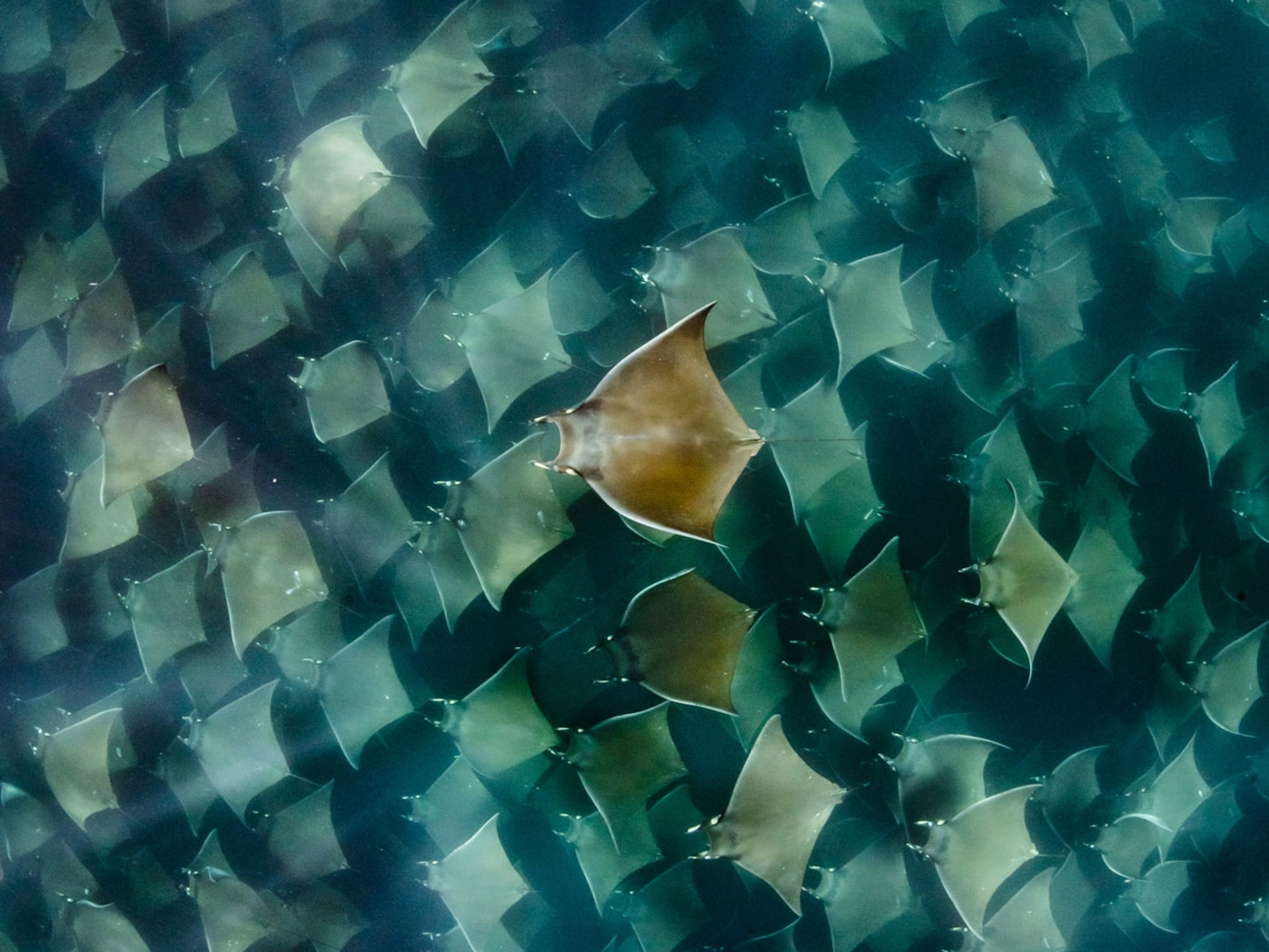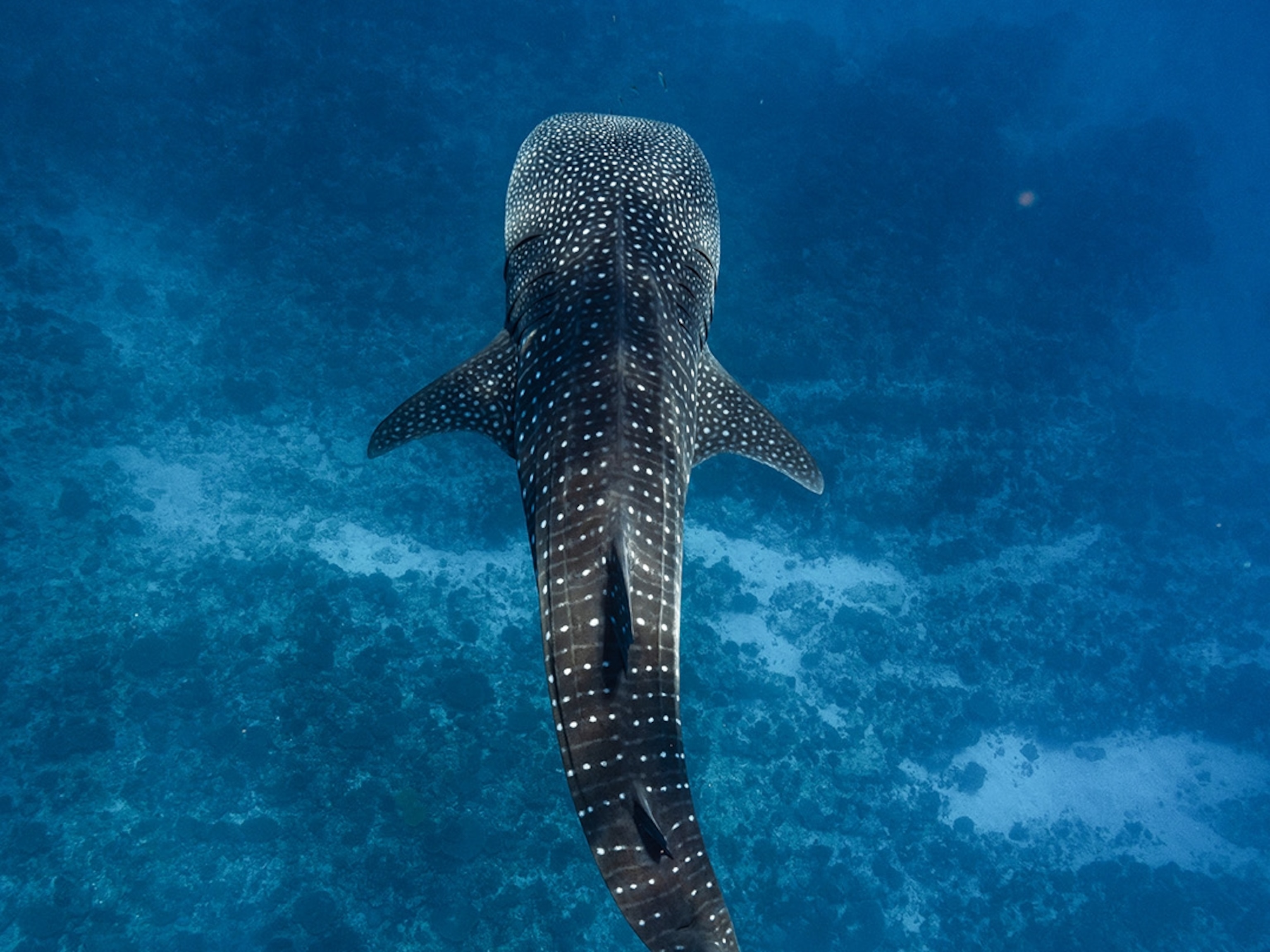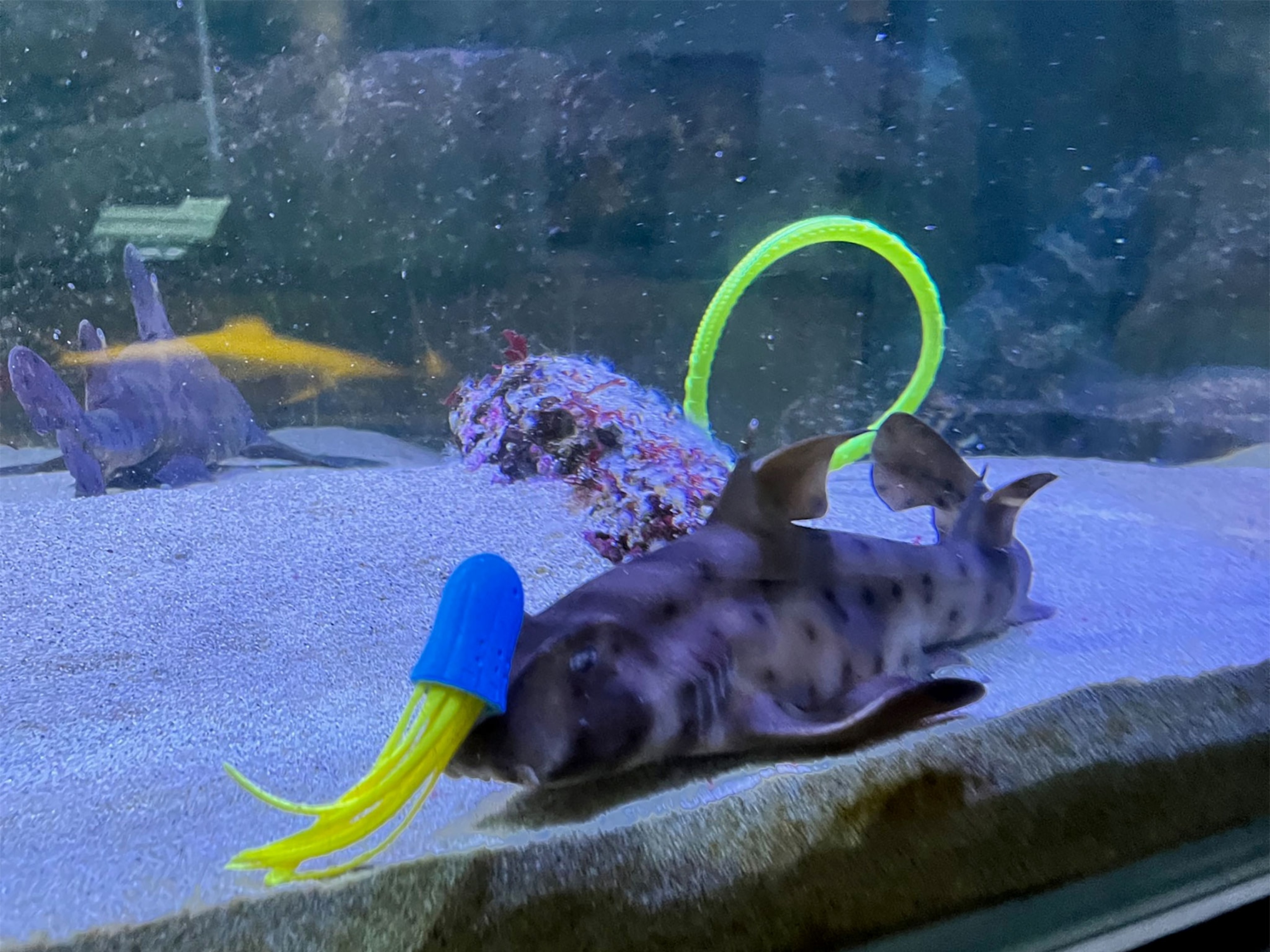Manta rays form close friendships, shattering misconceptions
By developing and maintaining a network of acquaintances, these massive fish are revealing themselves to be social butterflies of the sea.
Sharks and rays are often perceived as cold fish, but at least one species of manta ray has a surprisingly complex social life, a new study says.
A majestic species that can reach widths of 18 feet, reef manta rays (Mobula alfredi) are often seen gliding over tropical reefs in large numbers, notes study leader Rob Perryman, a researcher for the Marine Megafauna Foundation.
Their feeding and courtship activities also occur in groups, which gave Perryman reason to suspect these animals are actually social butterflies. (Go inside the underwater world of manta rays with a National Geographic photographer.)
What’s more, their big brains—the related giant manta ray has the largest brain of all fish—hinted that reef mantas are “reasonably intelligent animals,” he says.
Five years of observation and study later, the study reveals that reef mantas actively choose “to socialize with other individuals that they know, and they remember their social contact with those individuals,” says Perryman, whose study was published recently in the journal Behavioral Ecology and Sociobiology.
“They have friends, to put it in quite an anthropomorphic way.”
The study, one of the first to illuminate the animal’s social life in depth, also “adds to the growing evidence in recent years that sharks and rays are not the solitary, mindless, socially bereft animals that we perhaps thought them to be in the past,” he adds.
Picking partners
Perryman and colleagues work in Indonesia’s hyper-diverse Raja Ampat Marine Park, a mostly undisturbed habitat where reef mantas behave naturally.
During the research, the team regularly snorkelled or scuba dived to photograph and identify individual manta rays at their congregation sites. Reef mantas have patterns of unique belly spots that stay the same throughout their lives.
The researchers recorded 3,400 encounters with nearly 600 different mantas, plugging them into a database that logged where and which mantas were seen, and with whom. Further analyzing this data, the researchers eliminated non-social reasons some mantas might congregate in specific places, such as habitat preferences. (Read about the discovery of a rare manta ray nursery.)
The results revealed mantas formed two types of social circles, with mature females grouping together, and another clique consisting of males, females, and juveniles. Perryman thinks that the aggregations of females might be a defense against unwanted mating attempts from males.
Whether closely related rays spend more time together is one of Perryman’s future research questions.
Bright and extroverted—for a fish
Csilla Ari, a behavioral neuroscientist at the University of South Florida, says the findings mesh well with her own research, which has suggested the fish are clever, interacting with their reflections in mirrors. Mantas can also quickly brighten the white markings on their back during intense social interactions, according to Ari, who is not involved with the study.
This signal may reinforce social hierarchies between mantas, or simply convey excitement, Ari says by email, noting the new study “adds a new level of understanding about the social behavior of manta rays.”
Joshua Stewart, a conservation ecologist with the U.K.-based nonprofit Manta Trust, praised the study’s findings, but cautioned against placing our own, mammalian expectations of social behavior on the mantas. (Learn why manta rays swim in mesmerizing circles.)
Both Stewart and the study authors acknowledge that the mantas’ bonding is not the tight-knit, lifelong phenomenon that many whales experience, for example. Manta alliances last weeks to months, not decades.
Friendlier waters
Understanding this newly identified social world could help scientists better conserve the species, which is listed as vulnerable to extinction by the International Union for Conservation of Nature. Reef mantas face many threats, from plastic pollution to overfishing.
For instance, the mantas’ social networks may be crucial for their reproduction or ability to find food, says Perryman.
Because it’s very popular for people to see or swim alongside manta rays, such research could inform tourism operations about more responsible practices.
For example, the data could help governments develop guidelines on the number of boats and tourists allowed in the water with mantas. (See the best places to spot mantas in the wild.)
Overall, he hopes his research on manta “friendships” can easier connect the public to these regal creatures, and drive enthusiasm for their protection.





